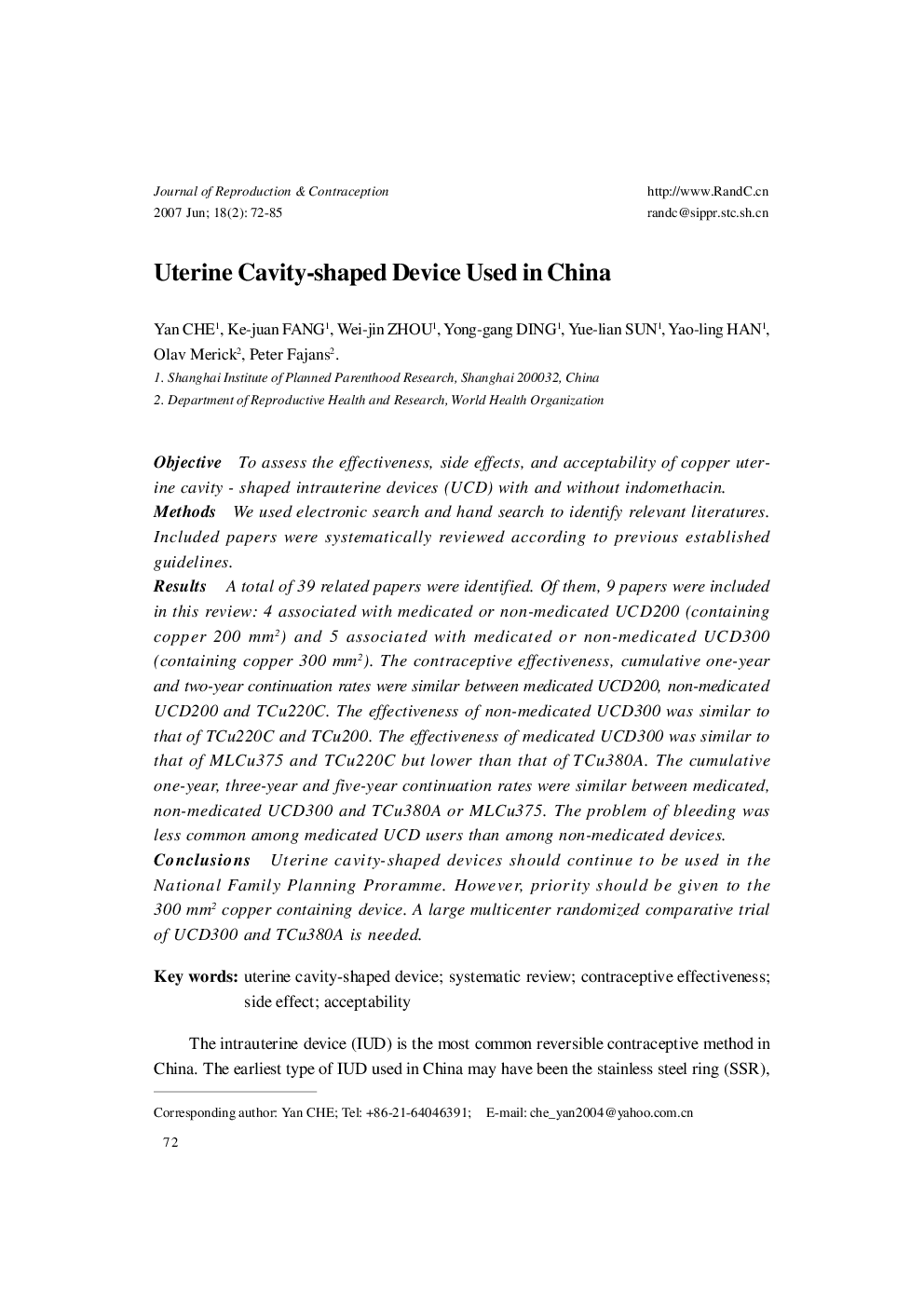| Article ID | Journal | Published Year | Pages | File Type |
|---|---|---|---|---|
| 3961096 | Journal of Reproduction and Contraception | 2007 | 14 Pages |
ObjectiveTo assess the effectiveness, side effects, and acceptability of copper uter-ine cavity - shaped intrauterine devices (UCD) with and without indomethacin.MethodsWe used electronic search and hand search to identify relevant literatures. Included papers were systematically reviewed according to previous established guidelines.ResultsA total of 39 related papers were identified. Of them, 9 papers were included in this review: 4 associated with medicated or non-medicated UCD200 (containing copper 200 mm2) and 5 associated with medicated or non-medicated UCD300 (containing copper 300 mm2). The contraceptive effectiveness, cumulative one-year and two-year continuation rates were similar between medicated UCD200, non-medicated UCD200 and TCu220C. The effectiveness of non-medicated UCD300 was similar to that of TCu220C and TCu200. The effectiveness of medicated UCD300 was similar to that of MLCu375 and TCu220C but lower than that of TCu380A. The cumulative one-year, three-year and five-year continuation rates were similar between medicated, non-medicated UCD300 and TCu380A or MLCu375. The problem of bleeding was less common among medicated UCD users than among non-medicated devices.ConclusionsUterine cavity-shaped devices should continue to be used in the National Family Planning Proramme. However, priority should be given to the 300 mm 2 copper containing device. A large multicenter randomized comparative trial of UCD300 and TCu380A is needed.
